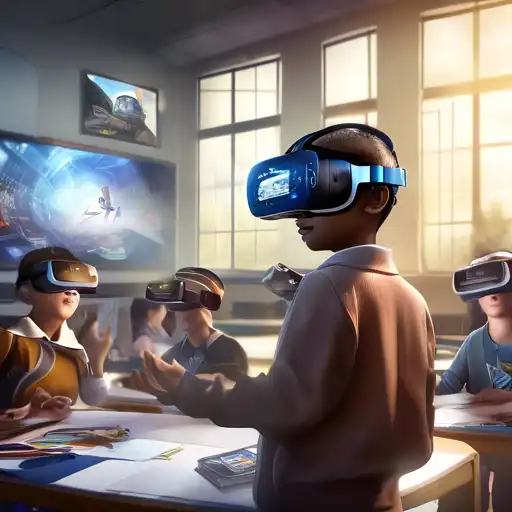Introduction to Virtual Reality in Education
Virtual Reality (VR) is revolutionizing the educational landscape, offering immersive learning experiences that were once beyond imagination. This technology enables students to explore historical sites, dissect complex biological structures, and even travel through space, all from the safety of their classroom. The potential of VR in education is limitless, paving the way for a new era of interactive and engaging learning.
The Benefits of VR in Learning Environments
VR technology offers numerous advantages for both students and educators. It enhances engagement by providing interactive and immersive experiences, making learning more enjoyable and effective. Studies have shown that VR can improve retention rates by allowing students to visualize and interact with the subject matter in a three-dimensional space. Furthermore, VR can cater to different learning styles, making education more inclusive.
Key Advantages:
- Enhanced engagement and motivation
- Improved retention and understanding
- Access to impossible or dangerous experiences
- Support for diverse learning styles
Implementing VR in Schools and Universities
Integrating VR into educational institutions requires careful planning and investment. Schools and universities need to consider the hardware and software requirements, as well as the training needed for educators to effectively use VR in their teaching. Despite these challenges, the benefits of VR in education make it a worthwhile investment for the future of learning.
Steps for Implementation:
- Assess the educational goals and how VR can meet them
- Invest in quality VR hardware and software
- Train educators on how to integrate VR into their curriculum
- Evaluate the impact of VR on student learning outcomes
Challenges and Considerations
While VR offers exciting opportunities for education, there are challenges to consider. The cost of VR equipment can be prohibitive for some institutions, and there is a need for ongoing technical support. Additionally, educators must ensure that VR experiences are pedagogically sound and align with learning objectives.
The Future of VR in Education
The future of VR in education is bright, with advancements in technology making it more accessible and affordable. As VR becomes more integrated into educational systems, it will continue to transform how we teach and learn, making education more interactive, engaging, and effective for students worldwide.
For more insights on innovative learning technologies, explore our technology section.
